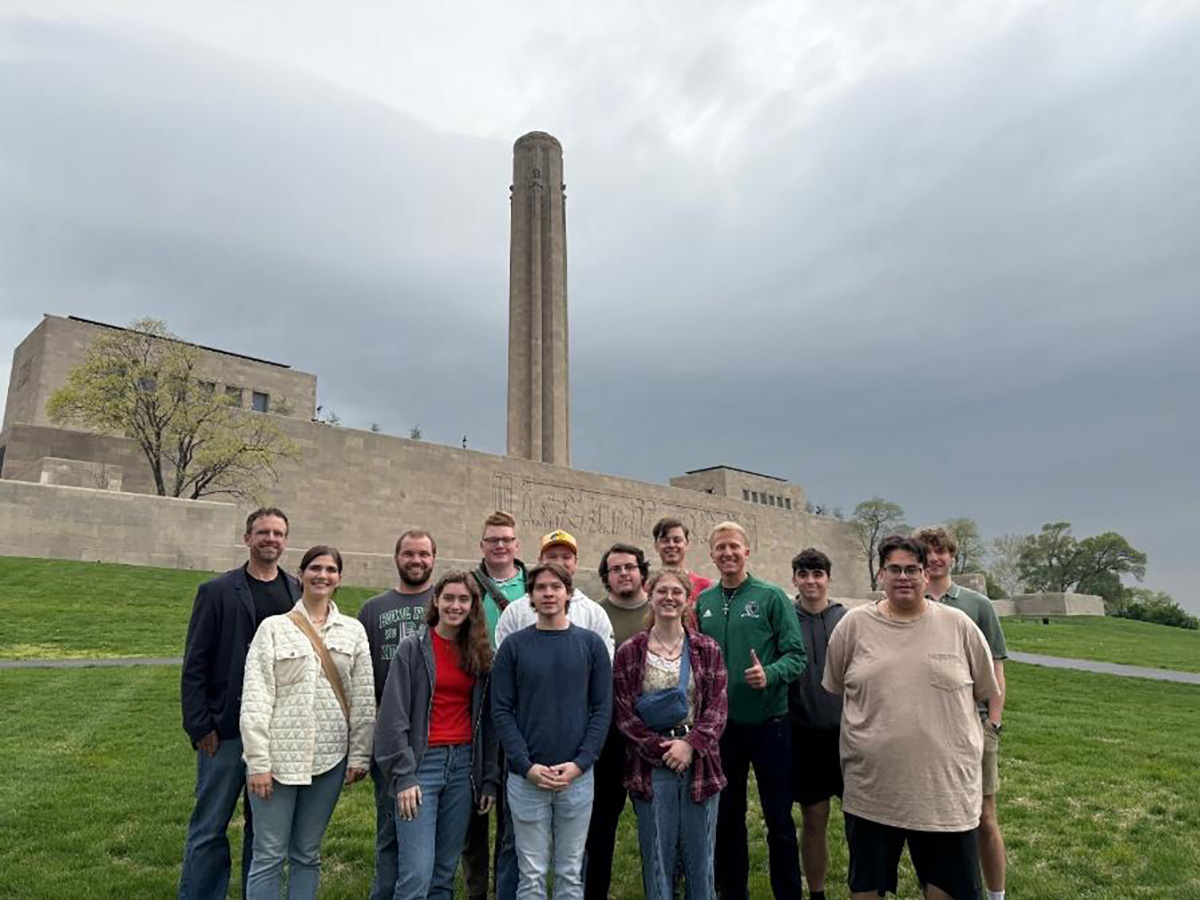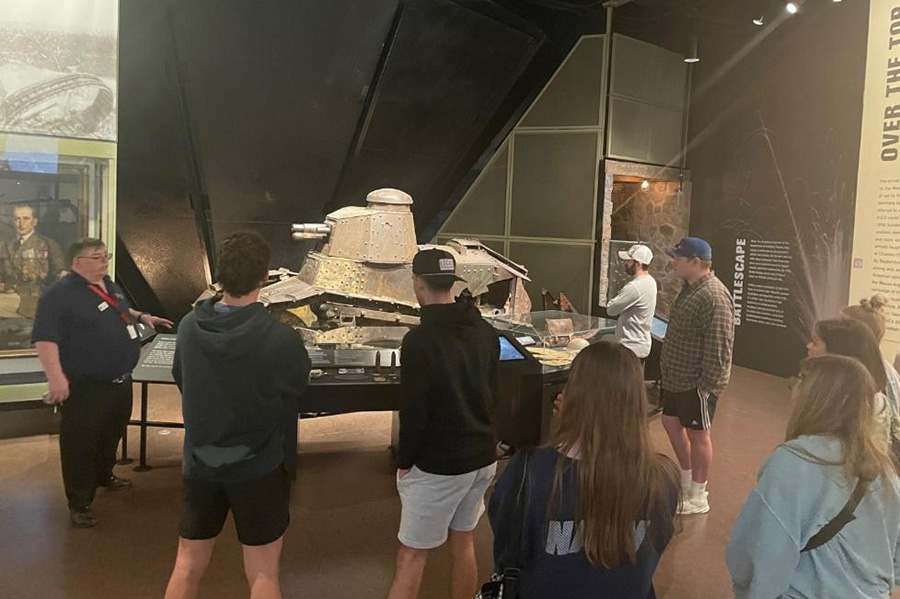
In April, Northwest history students visited the National World War I Museum and Memorial in Kansas City. (Submitted photo)
Northwest Missouri State University history students recently visited the National World War I Museum and Memorial in Kansas City, where they made connections that helped them better understand the scale of industrialized warfare and the toll it exacted on those who lived through it.

Students viewed museum artifacts – including uniforms, gas masks, trench tools and artwork – during a tour of the National World War I Museum and Memorial in Kansas City. (Submitted photo)

Students learned about the museum’s curation and preservation practices during a behind-the-scenes archive tour. (Submitted photo)
The students in Dr. Devlin Scofield’s course, The World at War, and Dr. Rob Voss’s Research Seminar on American Religious History visited the museum in April. The experiential learning opportunity, supported by a College of Arts and Sciences Academic Initiative Grant and the Department of Humanities and Social Sciences, was designed as a capstone to Scofield’s course exploring the global, political and human dimensions of World War I.
“The trip significantly enhanced student learning by grounding abstract historical themes in material reality, encouraging interdisciplinary reflection and inspiring personal and professional engagement with the past,” Scofield said. “For many students, this was their first time visiting a nationally recognized museum dedicated to a major historical event. Its immersive exhibits – including trench reconstructions, artillery displays, curated propaganda and a behind-the-scenes archive tour – brought course content vividly to life.”
The museum visit was intentionally designed, Scofield said, to reinforce two central components of his course: A semester-long avatar project for which students created historically grounded characters living through the war and a simulation of the 1919 Paris Peace Conference that led to the Treaty of Versailles.
Students incorporated museum artifacts – such as uniforms, gas masks, trench tools and artwork – into their avatar narratives and digital timelines. Students also cited the museum’s maps and postwar exhibits to shape their positions and strategies during the simulation.
Colby Johnson, a senior from Gladstone, Missouri, pursuing a social studies major with an emphasis in history, said the visit enhanced his understanding of World War I, making it relatable and personable.
“The museum experience heavily complemented the materials, lectures and discussions that we experienced in the course because, in my opinion, being able to look at the content the way that we had the opportunity to and then getting to experience the museum and memorial helped humanize the museum and its contents,” Johnson said.
Additionally, students learned about the museum’s curation and preservation practices during a behind-the-scenes archive tour that provided insight into careers in public history. Visiting the museum helped students connect historical study with broader questions of representation, messaging and professional practice.
“For history majors, this provides a great opportunity for them to experience a space that is extremely similar to one that they might work in some day, and I think that brings another active dimension to the weight and importance of the National World War I Museum,” Johnson said.
Students said the experience helped them develop a more personal connection to the past and a deeper understanding of the human cost of global conflict.
“I had often frequented the museum in my youth and at the start of this class had a basic understanding of the war and who fought in it,” Paul Nelson, a senior history major from Holt, Missouri, said. “But after taking this class, I soon found that my interest in the Great War had peaked beyond what I had previously imagined. Taking very detailed notes and then going back over them to better understand them gave me a greater grasp on the reality of this pivotal moment in human history.”